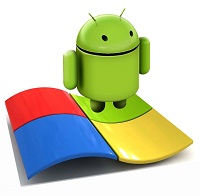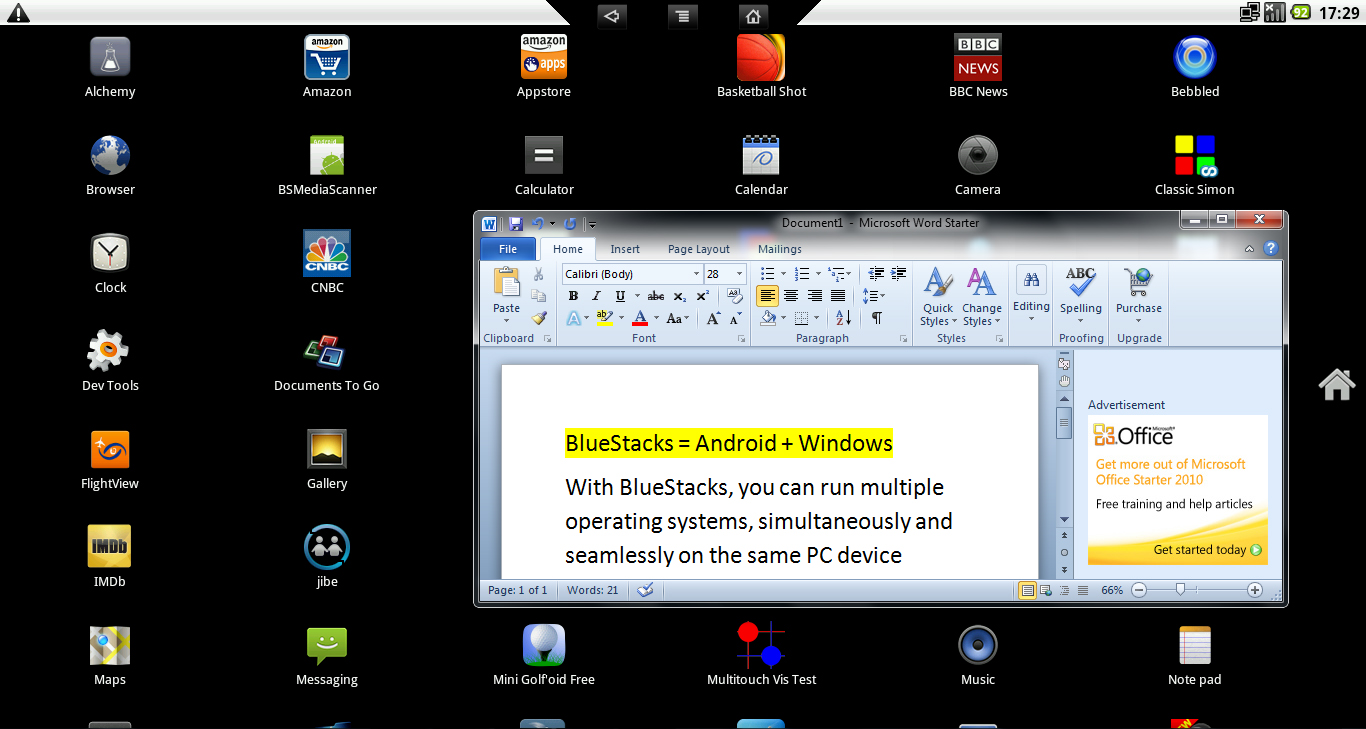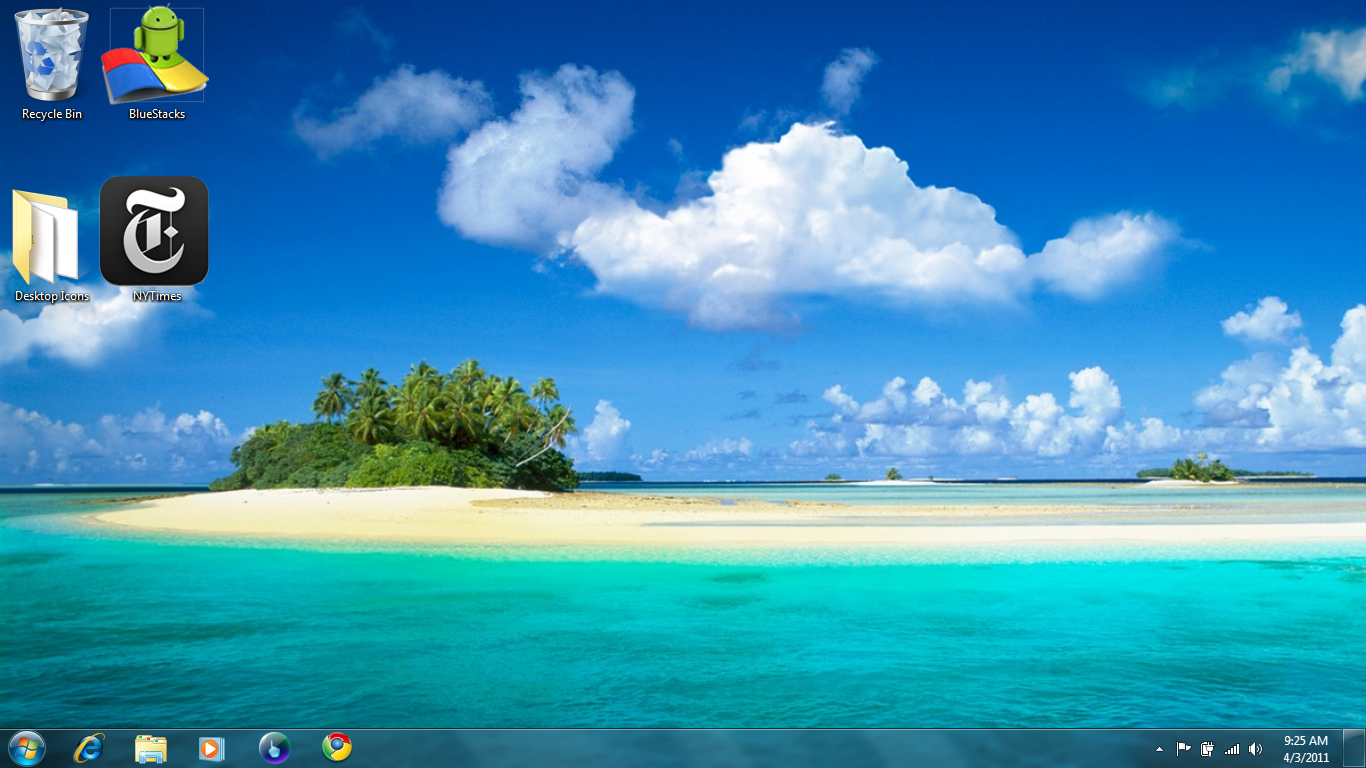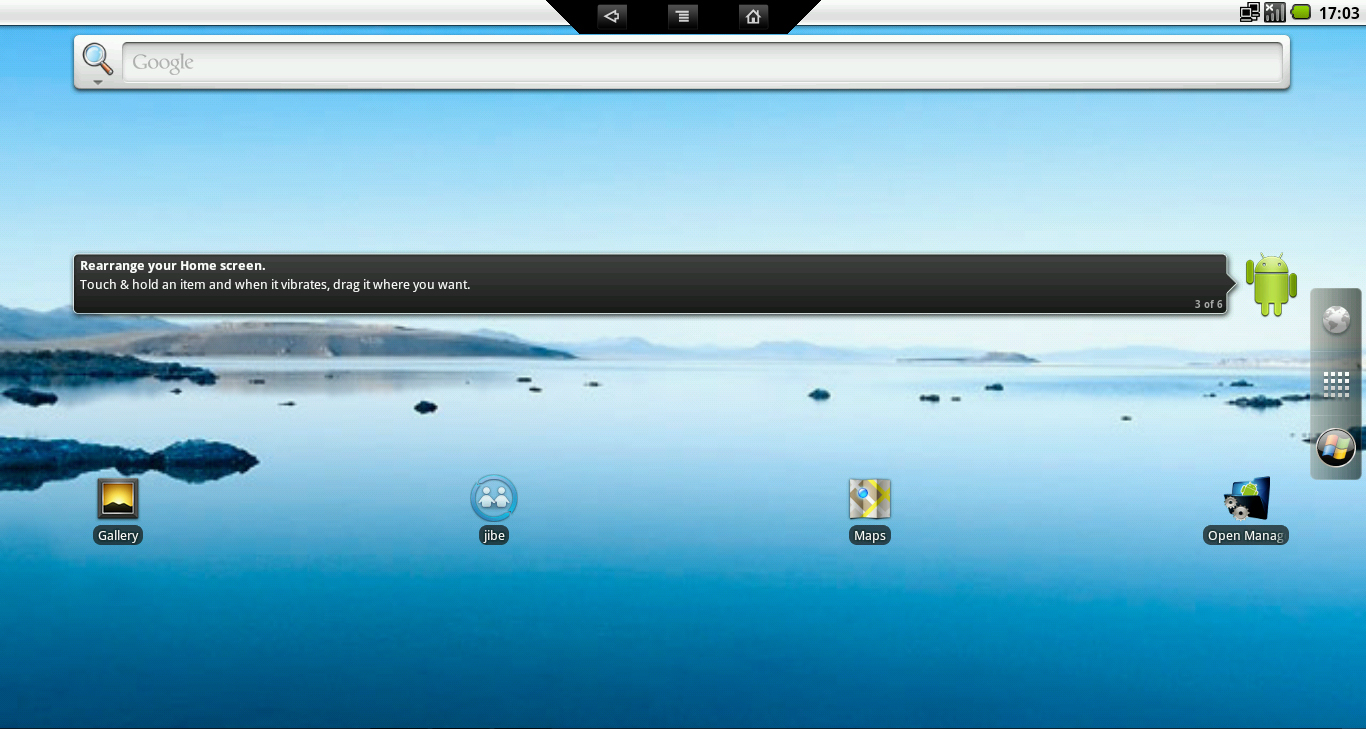BlueStacks Is Android's Parallels For Windows
Several companies I work with in the PC space had been asking me if I have heard of this new company called BlueStacks. These specific PC OEMs were interested in this particular company because the smart folks at BlueStacks have creatively developed a software solution that allows consumers to run the full Android experience on their Windows based PCs.Is this a Gimmick or is there Value?
You may read this and ask "why would anyone want to run Android on their Windows PC?" That would be a valid question given that Android has been developed for a touch based interface like one on a smartphone or tablet. At a more fundamental level, however, who is to say Android does not also belong on a desktop or notebook?
That is exactly what BlueStacks believes and has set out to solve. This is exciting to those who make Windows PCs because it gives them an opportunity to participate in the Android ecosystem. If you have an Android phone or tablet, there could be value to using and experiencing many of the same apps you use regularly on your Windows based desktop as well.
Another interesting and valuable potential application for Android on Windows is the developer opportunity. Right now, developers are creating applications focused on the smartphone and tablet space. Soon they will also be able to target TVs through Google TV. If BlueStacks is successful and we do see Windows based PCs ship in volume with their software, developers can now also target desktops and notebooks and create apps that are specific for that platform and hardware.
How It Works
What BlueStacks developed is an extremely clean approach to delivering Android by virtualizing the full Android OS and running it on x86-based Windows PCs. They ran me through a demo on a 28-inch HP TouchSmart all-in-one PC. No dual boot needed and it ran the full version of Android 2.2 seamlessly. It loads as a virtual OS, and you can switch back and forth between them seamlessly. A user could be in a Windows app and collapse it to the task bar and open an Android app, use it, and then also collapse it to the task bar for later use. Multi-tasking between Android apps and Windows apps was one of the more compelling parts of the demo.
Even more impressive is the fact that it uses all of Windows utilities and drivers. For example, you are in an Android app and need to print something. You just go to the top of the menu bar and hit print and it uses the Windows printer drivers. Or if you are in an Android Skype application, it uses the Windows drivers to handle the audio or video calls.
There is no access to the Android Market, however, because of the restrictions Google has placed around how someone gets certified for the Android Market. BlueStacks has a viable solution with the Amazon App store, though, which is taking the place of the Android Marketplace in their implementations. Right now the solution is not publically available but BlueStacks said they plan on releasing their software for anyone to download later this year.
Conclusions
Microsoft may need to be worried about this as it could potentially slow down parts of their business they are working on to specifically compete with Android. It could also put a damper on future Windows software developments if consumers starting preferring to use Android apps instead of software for Windows.
Intel and AMD should be very happy about this since both of them have needed to offer a compelling reason to consider Android on X86. As far as the PC OEMs are concerned, this company may have instantly helped them get access to a part of the market they have been locked out of completely. I am very excited to see what the hardware manufactures and software developers come up with as we see the BlueStacks solution hit the market.
What do you our readers think? Is the idea of running Android and Android apps on your desktop or notebook a compelling idea?




